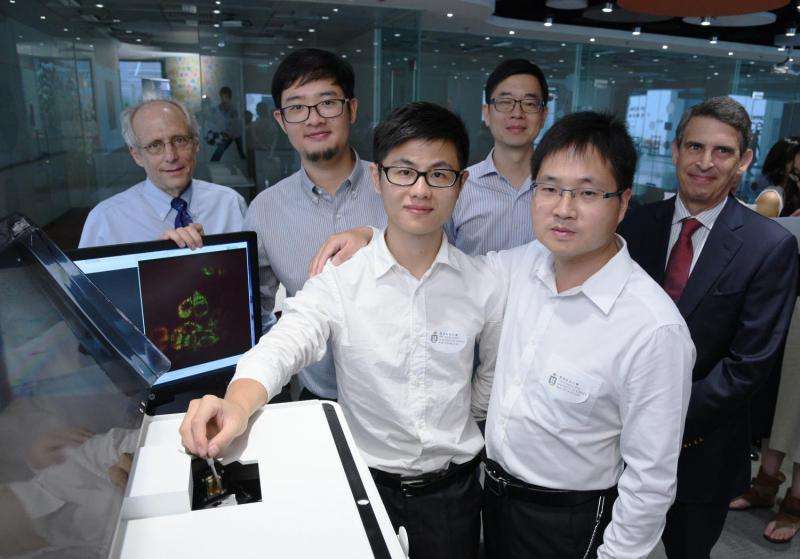New technology to capture live cell images opening new possibilities to the study of cell biology

Researchers at The Hong Kong University of Science and Technology (HKUST) have developed a new generation of microscope, which not only could capture 3D live cell videos, but the resulted images are also of much higher quality, greatly enhancing the accuracy and the scope of research on cell biology.
Researchers at The Hong Kong University of Science and Technology (HKUST) have developed a new generation of microscope, which not only could capture 3D live cell videos, but the resulted images are also of much higher quality, greatly enhancing the accuracy and the scope of research on cell biology.
While an existing confocal microscope can also capture 3D bio-images, the laser light hitting on the sample is typically one million times that of summer sunlight, such intense light exposure inevitably disrupts cell activities and eventually kills the cell, posing limits to the study of cell biology.
The LiTone Line Bessel Sheet (LBS) microscope invented by a team led by Prof Du Shengwang and Prof Michael Loy from HKUST, however, is 1,000 times less photo-toxic than the current confocal model, allowing the cell to live much longer for observation. Phototoxicity is a type of sensitivity induced by light, which could cause molecular changes. The new microscope is also about 1,000 times faster, allowing much higher temporal resolution for a smooth video taking. Scientists can then study how proteins are transported within cells with great accuracy and efficiency, and what happens when the cell becomes abnormal. Prof Du is a Professor from the Department of Physics and the Department of Chemical and Biological Engineering; he is also the Associate Director of the Super-Resolution Imaging Center. Prof Loy is an Emeritus Professor of Physics.
"It is a powerful technology out of sophisticated science and engineering, but we make it simple to users so that it can be operated by biologists with minimal amount of training," Prof Du said. "For the first time, scientists can study cells in much greater details. That could eventually help scientists unlock the mystery of how certain diseases were formed and developed in a cellular level."
Provided by The Hong Kong University of Science and Technology





















